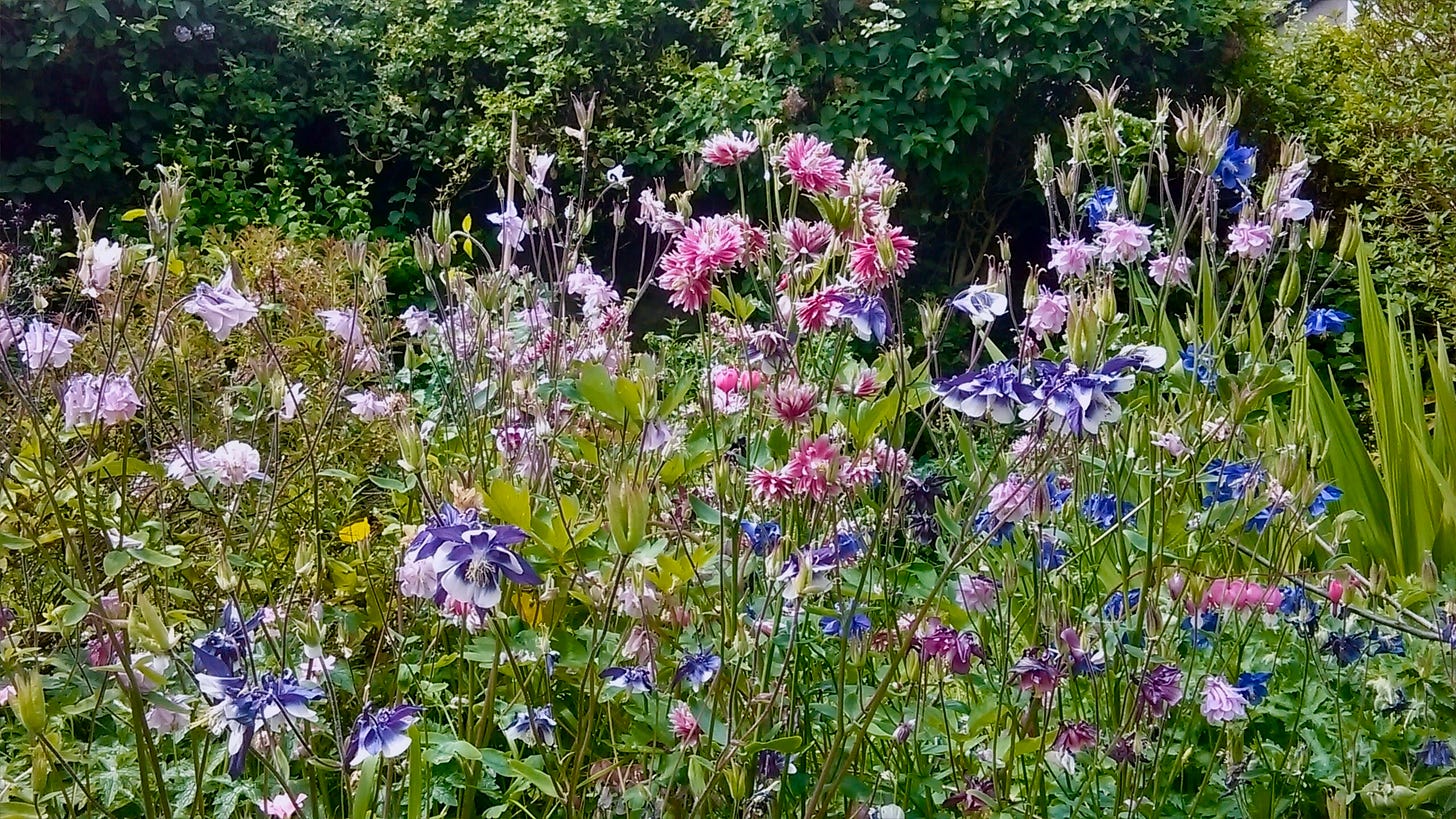I always knew that Mum wanted to be cremated, but she never talked about what she wanted us to do with her ashes afterwards. Her parents’ ashes are interred in a garden of remembrance somewhere in Liverpool, and it’s only occurring to me now that I have no idea where they are.
By the time we knew that Mum was dying, in that short two month period before the day she died, it was too late to have that conversation. The benign meningioma that turned malignant and eventually killed her was pressing down on the part of her brain where language and speech are formed. She gradually lost the ability to speak over the year or so before her death, something which I am still incredibly angry about. The tumour took more and more from her during that time, but that’s the one that feels the most unfair.
We cremated Mum as she had wished and then paused, stuck. What should we do with her ashes now? In the immediate aftermath of her death and funeral, no one was ready to make that decision. No one was ready to let her go yet. So the ashes sat on the mantelpiece in the front room in their green plastic urn that made me think of plant pots. It was the room she had done most of her dying in, before the final journey to the hospice, and for a time the empty hospital bed remained there too, an ever present reminder.
Autumn 2015
Ynys Enlli, Bardsey Island, lies 2 miles off the tip of the Llŷn Peninsula in Gwynedd, North West Wales. It’s sometimes called the Island of 20,000 saints because that many saints are said to be buried there. I can believe 20,000 seabirds but 20,000 saints seems a stretch - particularly as the island is only 1.5 miles long and half a mile wide. The researcher in me wants to see a list of names. Still, it’s not completely outside the realms of possibility: a monastery was founded there in the 6th century by St Cadfan, and several important Celtic saints are believed to have been buried there (although in some cases only temporarily!).
By the Middle Ages the island had become an important pilgrimage site. Three pilgrimages to Bardsey were deemed to be the equivalent of one pilgrimage to Rome, perhaps reflecting the challenges involved in reaching the island at that time. The journey culminated in an often dangerous sea crossing that is still not without risks today.
The monastery was confiscated in 1537 during Henry VIII’s Dissolution of the Monasteries. Today, Ynys Enlli is a National Nature Reserve and Site of Special Scientific Interest. It’s famous for its coastal and marine wildlife, including choughs, Manx shearwaters, grey seals, dolphins and porpoises, as well as rare flowering plants, lichens and mosses.
The island is also home to what is said to be the rarest apple in the world. In 1999 apples from an ancient apple tree believed to be the only survivor of the medieval monks’ orchard were tested. They were confirmed to be a new and previously unknown variety. The apple tree was propagated by grafting on to rootstocks and you can now buy your own Afal Ynys Enlli (Bardsey Island Apple) sapling. Which my dad did in the autumn of 2015.
He planted it in the garden and buried some of Mum’s ashes in amongst its roots. I wasn’t there when he buried those ashes. I still don’t know how I feel about it - both the not being there and the burying of her ashes. Burying them feels illogical somehow. She wanted to be fire and air but we’re putting her down into the dark earth. But the garden is a place of life, one of Mum’s places, full of memories of her growing, digging and harvesting. It feels good to have her close by.
I suppose the idea is that her ashes will become part of the apple tree, that some of what remains of her will become new life. It’s a comforting idea but I don’t know how true it is. As far as I understand it, ashes are inorganic matter so they’re likely to remain intact for decades, maybe even centuries, rather than decompose into the soil or be absorbed by the apple tree.
Dad planted the apple tree not far from where we’d buried our childhood pets, rabbit, guinea pig and a multitude of mice, so there’s a little corner of the garden that is death and love. Over the years since her death I’ve watched her garden slowly decay and disappear around that spot. It’s been hard, like another long-drawn out way of losing her. The flower bed she planted has been dug up, only a few hardy plants survive. They push up through the grass each spring, a ghostly reminder. The ancestral rhubarb is no more, its only surviving cutting struggling on in my garden in County Durham. The fruit trees she planted are clogged with weeds. There’s algae on the surface of the pond, cracks in the patio tiles. The garden chairs need to be blasted clean with a hose.
I don’t blame Dad for the loss of Mum’s garden. It was always her space and, like the room she did her dying in before the final journey to the hospice, I think he finds it hard to spend time there. But the gradual disappearance of her garden feels like a metaphor for the loss of her care and attention. Except it’s not a metaphor - it’s a very real and physical reminder of that loss. I see the same loss of her care and attention in their house, my childhood home, and in us.
955 words




